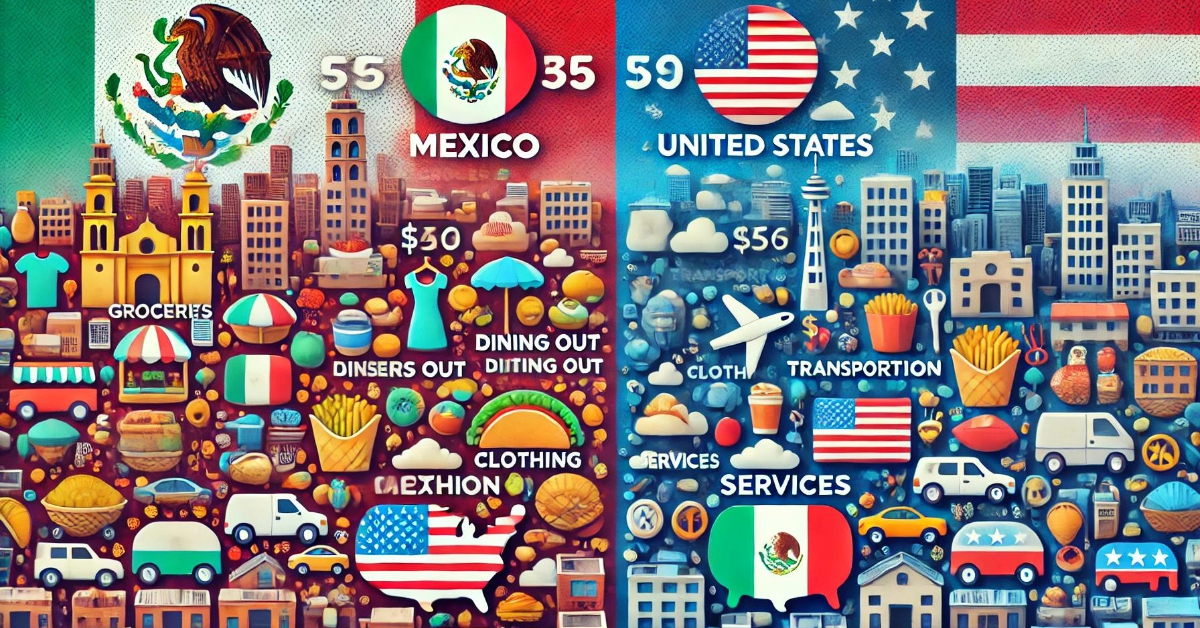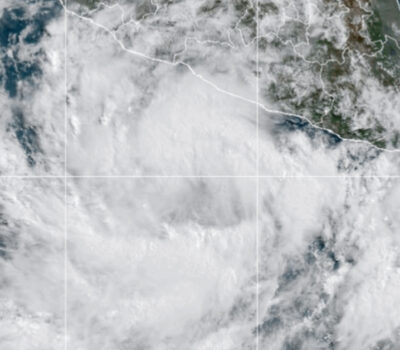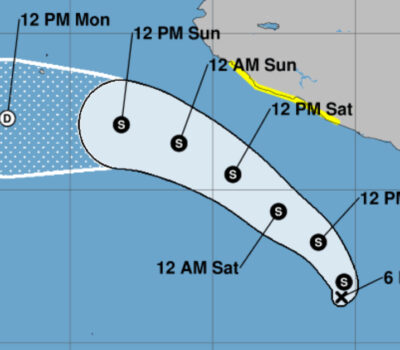Understanding the cost of living and expenses in different countries can offer valuable insights, especially for those considering relocation or travel. Mexico and the United States present a significant contrast not only in population and economic performance but also in the costs associated with everyday living. As of 2019, the United States had a population of 327,352,000 people, while Mexico had 125 million inhabitants. The economic disparity is notable, with the United States’ Gross Domestic Product (GDP) growing by 3.2% compared to Mexico’s modest increase of 0.2% in the same year.
This economic gap influences the costs of goods and services, as well as salaries in both countries. In 2019, the average hourly wage in the United States was USD $10.35, rising to USD $10.80 by January 1, 2020. In contrast, the minimum wage in Mexico increased from $102.68 pesos per day ($5.3 dollars) to $123.22 pesos per day ($6.4 dollars). Although Americans earn higher wages, their expenditures on products and services are also significantly higher compared to those in Mexico.
Supermarket Prices
The difference in cost is evident in everyday grocery shopping. Here are some approximate prices in dollars for various products in both countries:
| Product | Mexico | USA |
|---|---|---|
| Imported beer (33cl) | 1.81 | 2.87 |
| National beer (0.5 liters) | 1.00 | 2.14 |
| Bottle of wine (medium quality) | 7.80 | 12.00 |
| Water (1.5 liters) | 0.76 | 1.79 |
| Lettuce (1 piece) | 0.79 | 1.57 |
| Onion (1 kilo) | 1.12 | 2.59 |
| Potatoes (1 kilo) | 1.13 | 2.59 |
| Tomatoes (1 kilo) | 1.09 | 4.00 |
| Oranges (1 kilo) | 0.88 | 4.00 |
| Bananas (1 kilo) | 0.93 | 1.52 |
| Apples (1 kilo) | 2.03 | 4.50 |
| Veal (1 kilo) | 6.95 | 11.60 |
| Chicken breast (1 kilo) | 4.68 | 8.60 |
| Fresh cheese (1 kilo) | 5.15 | 10.40 |
| Dozen eggs | 1.44 | 2.28 |
| Rice (1 kilo) | 1.00 | 3.90 |
| Milk (1 liter) | 0.95 | 0.82 |
| Marlboro cigarettes (1 pack) | 2.70 | 7.50 |
It is clear from the table that most everyday items such as groceries are less expensive in Mexico than in the United States. This disparity is crucial for individuals considering the cost of living in both countries.
Dining Out
Dining out also reflects this cost difference. Here’s a comparison of common restaurant items:
| Product | Mexico | USA |
|---|---|---|
| Water (33 cl bottle) | 0.55 | 1.47 |
| Coca-Cola / Pepsi (33cl bottle) | 0.75 | 1.82 |
| Café Cappuccino | 2.13 | 4.10 |
| Imported beer (33cl bottle) | 2.60 | 6.00 |
| National beer (0.5 liters) | 1.56 | 4.50 |
| McDonald’s, Burger King or similar menu | 4.68 | 7.50 |
| Meal for two in an a la carte restaurant | 26.00 | 50.00 |
| Lunch in a cheap restaurant (menu of the day) | 5.20 | 15.00 |
In general, dining out is considerably cheaper in Mexico. Whether enjoying a casual meal at a fast-food chain or a more elaborate dinner for two, costs are lower across the board.
Clothing and Footwear
Clothing and footwear also show a pricing contrast:
| Product | Mexico | USA |
|---|---|---|
| A pair of men’s leather shoes | 62.40 | 94.00 |
| Brand name sports shoes (Nike, etc.) | 72.80 | 74.00 |
| A dress (Zara, H&M, etc.) | 31.20 | 34.70 |
| Levis 501 jeans (or equivalent) | 41.60 | 43.10 |
While the cost difference is less stark in some items like sports shoes and dresses, other items such as men’s leather shoes are significantly cheaper in Mexico.
Transportation
Transportation costs vary as well:
| Product | Mexico | USA |
|---|---|---|
| Gasoline (1 liter) | 1.03 | 0.73 |
| Taxi (1 hour journey, normal rate) | 6.24 | 28.00 |
| Taxi (1 km, normal route) | 0.52 | 1.72 |
| Home taxi (normal rate) | 1.56 | 3.50 |
| Monthly public transport pass | 18.20 | 70.00 |
| One-way ticket on public transport | 0.46 | 2.25 |
While gasoline is more expensive in Mexico, other transportation costs, such as taxis and public transport passes, are generally lower.
Services
Basic services and amenities also differ significantly:
| Product | Mexico | USA |
|---|---|---|
| Internet (50 Mbps or more, flat rate) | 26.52 | 63.00 |
| Local Mobile Prepaid Rate (1 min, no discounts) | 0.07 | 0.12 |
| Basics (electricity, gas, water, garbage) | 35.36 | 152.00 |
| Tennis court rental (1 hour) | 11.96 | 15.10 |
| Gym (price per month) | 30.68 | 36.10 |
| Cinema (one entry/ticket) | 3.64 | 12.00 |
Basic utilities and services are markedly cheaper in Mexico. This is especially notable in essentials like electricity, gas, and water.
Housing
Housing costs highlight a significant disparity:
| Product | Mexico | USA |
|---|---|---|
| Buy home on outskirts (price per m2) | 868.35 | 1900.00 |
| Buy home in city center (price per m2) | 1305.12 | 2600.00 |
| Housing (3 bedrooms) on outskirts | 452.37 | 1600.00 |
| Housing (3 bedrooms) in city center | 681.16 | 2100.00 |
| Apartment (1 bedroom) on outskirts | 207.99 | 1000.00 |
| Apartment (1 bedroom) in city center | 327.58 | 1300.00 |
Whether buying or renting, housing is considerably more affordable in Mexico compared to the United States.
Final Thought
While salaries in the United States are higher, the cost of goods and services is also substantially greater than in Mexico. This disparity affects everything from groceries and dining out to housing and utilities. For individuals or families considering relocation, these differences in cost are essential to understand. Living in Mexico offers a lower cost of living, making it an attractive option for those looking to maximize their income and savings. Conversely, while the United States offers higher wages, the increased cost of living must be factored into any financial planning. Understanding these contrasts is key to making informed decisions about where to live and work.
Understanding the cost of living and expenses in different countries can offer valuable insights, especially for those considering relocation or travel. Mexico and the United States present a significant contrast not only in population and economic performance but also in the costs associated with everyday living. As of 2019, the United States had a population of 327,352,000 people, while Mexico had 125 million inhabitants. The economic disparity is notable, with the United States' Gross Domestic Product (GDP) growing by 3.2% compared to Mexico's modest increase of 0.2% in the same year.












